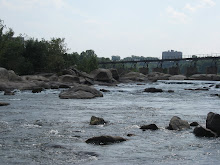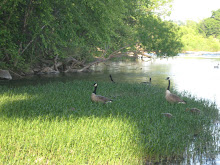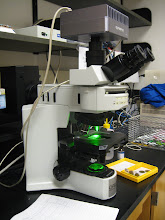
 Picture borrowed from http://www.dkimages.com/discover/Home/Animals/Fish/Bony-Fish/Orders/Gars/Gars/Longnose-Gar/Longnose-Gar-2.html
Picture borrowed from http://www.dkimages.com/discover/Home/Animals/Fish/Bony-Fish/Orders/Gars/Gars/Longnose-Gar/Longnose-Gar-2.htmlIt all finally came together this morning-I hooked, played and landed my first long nose gar. It was a beefy fish, and was probably 30-35 inches in length. I caught it on a bar'ed olive zonker pattern (actually a zonker-woolly bugger hybrid). I have been trying to catch one of these prehistoric apex predators for over 6 years ever since I was first introduced to the species at Montezuma National Wildlife Refuge located in upstate NY.
It was hard dragging myself out of bed, and that god-forsaken snooze button actually kept me from making it to the river to fish first light. I made it out by 7am, and entered the river via the pipeline. I had spooked a gar in this stretch before wading out to a pool, so I knew they were around. I first casted along the grass line with no luck, and made my way to the other side of the stretch, perched myself on an expose boulder and looked around the water. Roughly teen feet away, a beautiful gar was sitting idly in two feet of water behind a pile of rocks. I casted to the fish, with the rod behind me as not to spook it; strip....strip....strip...STRIKE...strip. F@*%, I missed the fish! It followed my fly (a white version of the zonker mentioned above) too closely, saw me and dashed for deeper water.
I decided to head upstream to some deeper, faster water to try my luck with the smallies. The deepest pool, which looked amazingly fishy, did not produce a fish, nor did I even have any follows. I worked my way to the next rapid-pool area, fishing shallow white water in which I missed a hit from a red breasted sunfish. I proceeded to climb across an island, and waded out into flatter water to work on my casting. To my surprise, the area just downstream of the last drop was full of aggressive smallies yet I was unable to hook any (lots of follows and short strikes).
My back casting room was suddenly decreased as the Hispanic noodlers made there way around me. I chatted with them for a bit, and admired the 40+ pound Flathead they had wrangled up. I made my way back stream, and crossed in calmer waters as I was calling it a day. I have seen good looking largemouth in this area (flat run just upstream of the first islands), so I decided to wade with caution while fishing ahead of me. I made a lousy cast, began retrieving the fly and out of now where-materializing from the green, grey bottom-a gar appeared. It took one swat at my fly with its beak, then a second, then a third and by now had tangled itself in my line and the rabbit fur. FISH ON, GET YOU SOME!
I was standing in stomach high water, and the fish thrashed around and made several leaps clearing the water right in front of me; I was fearful that its thrashing would cut my line, but my 20lbs leader did the trick. After about five minutes of this display, I reached the shore with the gar, untangled it and watched it swim away after it gulping one more breath of air from the surface. INCREDIBLE, I thought as I looked to the sky and thanked the forces of nature for such an opportunity that serves as a reminder as to why I love this so much. And of course, my camera's batteries were kaput, so you will have to settle with a borrowed image (the noodlers took a cool picture of the fish though).
Check this site out for information pertaining to the gar:
Conditions: Bright and sunny, but the sky began to grow cloudy around 1pm. Water clarity is excellent (I wonder if this is part of the problem in terms of finding active smallies), and the tide was out; I was fishing a slack tide. It appears as though the tidal range in about 1-2ft this time of year. During high tide, the smallies were much more prevalent and aggressive. Smallies hit, albeit short, the olive bar'ed zonker with a white hackle belly; this same fish took the gar. They seemed to strike at the fly as it made its final swing. Temps ranged 75-90, yet quikly cooled to the upper 80s as the breeze picked up.
Casting Notes: I switched my grip to thumb up rather than forefinger (as if I were holding a golf club). I noticed as I get tired and lazy I begin to use my wrist to accelerate the rod....I really must focus on 'accelerated to stop' during the forward and back stroke. If I tilt my wrist inward slightly that seems to reduce the flexing of my wrist. This new Cabellas Tradition 2 rod is extremely fast, so a small slice only flexing the tip produces night tight loops. Made my first cast around 4oft!


















No comments:
Post a Comment